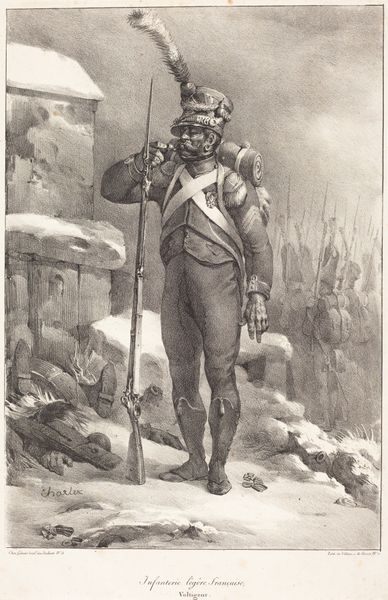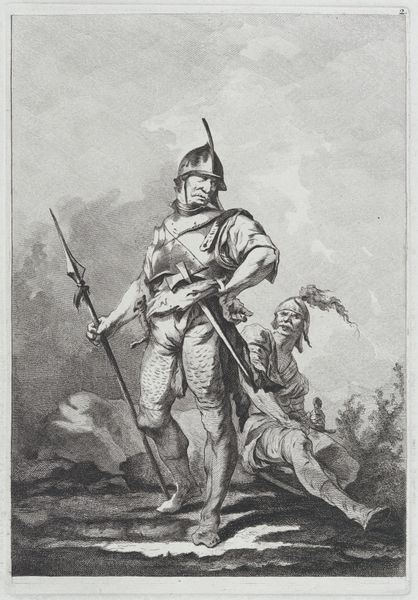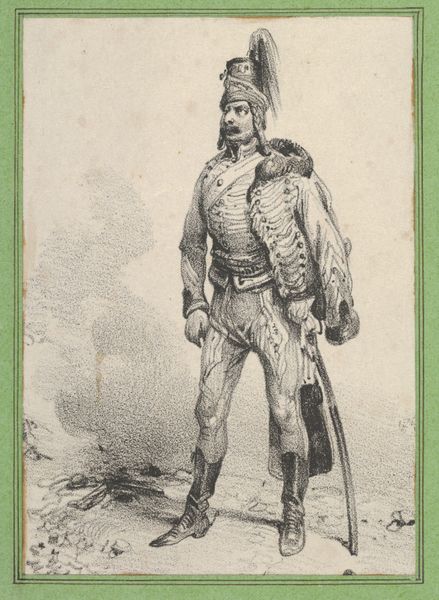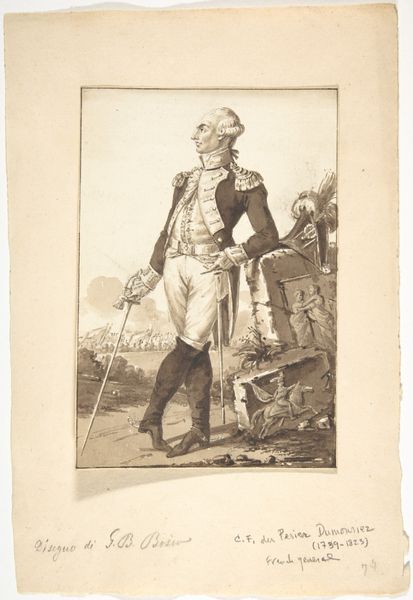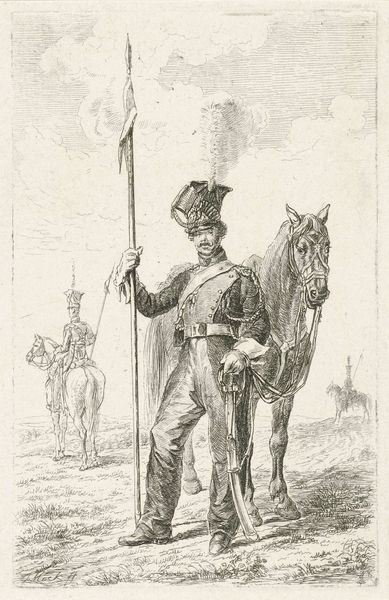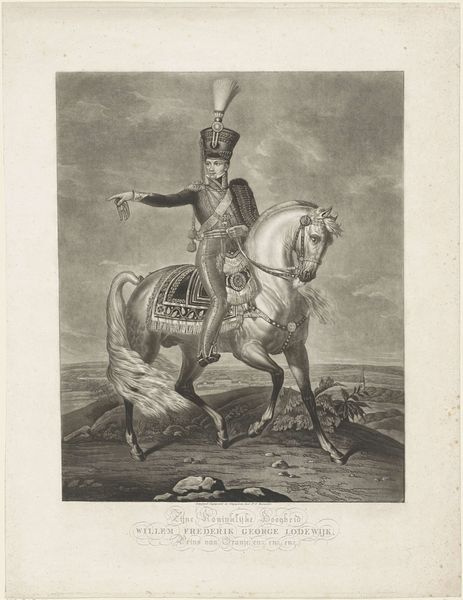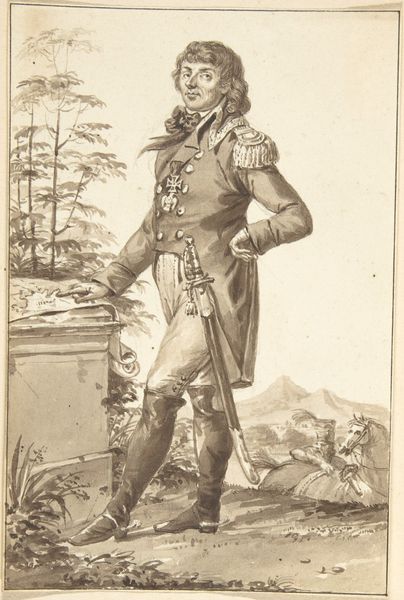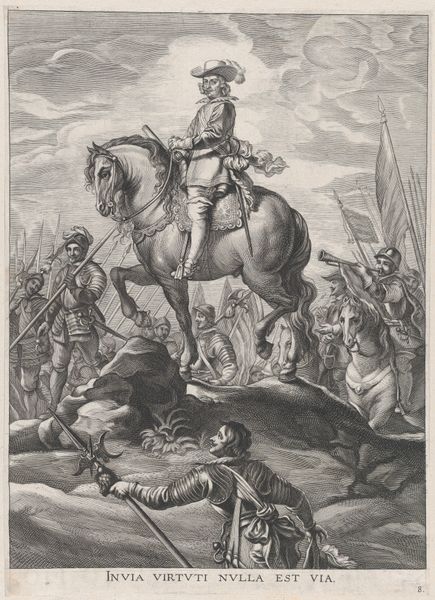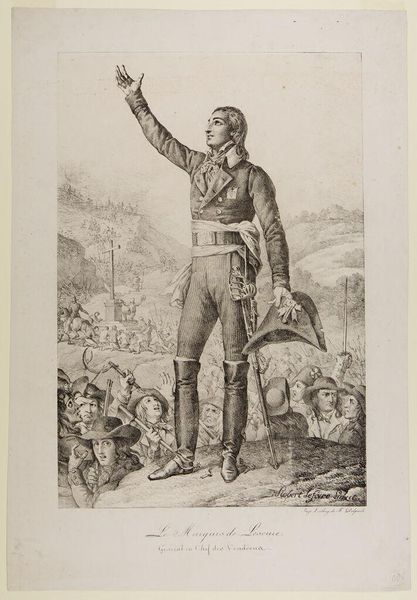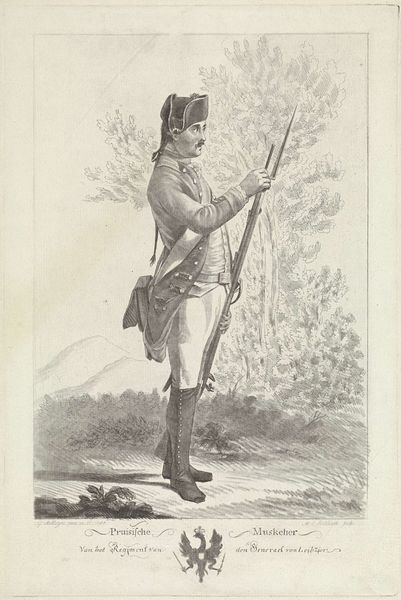
print, engraving
#
portrait
# print
#
figuration
#
romanticism
#
line
#
history-painting
#
engraving
Copyright: National Gallery of Art: CC0 1.0
Curator: This engraving by Nicolas Toussaint Charlet, titled "Infanterie légère française, Carabinier", dates back to 1822. It presents a striking depiction of a French light infantryman. Editor: My immediate impression is one of somber intensity. The detail is incredible, capturing every line and fold of the uniform. You can almost feel the weight of the rifle he carries. Curator: Indeed. Charlet was known for his detailed depictions of military figures. The engraving itself speaks to broader themes of militarism in post-Revolutionary France, and the evolving role of the individual within the larger machinery of the state. We should examine how this work resonates within intersectional narratives. What kind of narrative did the French want to impose in Europe? Editor: For me, the key lies in the production of this image. The choice of engraving suggests a desire for reproducibility and dissemination to a wide audience. Engravings such as these, made with ink on paper, would allow a specific kind of memory making and image circulation within France, beyond. Consider the labour and the materials involved. How were these materials produced and by whom? And in what quantities were they created to get the image to travel so efficiently? Curator: Good points. Furthermore, if we analyze the soldier’s dress and equipment in relation to gender studies, we might discover symbolic assertions of power. This artwork helps establish connections to understand the larger context of masculinist state projects and what these portraits sought to perpetuate across the European territories. Editor: Absolutely. The way he's rendered, the focus on the materiality of the uniform, it isn't just about aesthetics; it is about the very manufacturing of the state's military image through the meticulous crafting of an image that emphasizes strength. The image’s power resides in its tangible existence as something both to be observed and widely owned as part of a set or collection. Curator: I hadn’t thought of it in those terms, but that does illuminate some underlying currents that make it a piece so exemplary of the early 19th century. Thank you. Editor: My pleasure. Thinking about it this way gives a much more solid sense of its historic place.
Comments
No comments
Be the first to comment and join the conversation on the ultimate creative platform.
